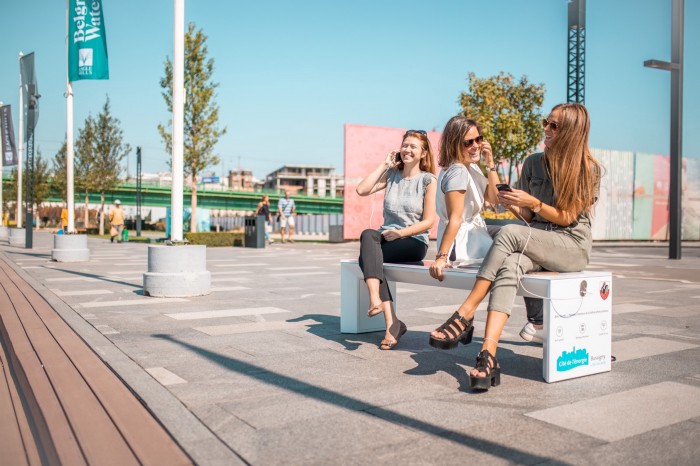FURNISHING THE FUTURE:
If there was an app giving you real time data about the most crowded shops to avoid or the longest check-out lines during the Christmas shopping fever, you’d welcome that, wouldn’t you?
It would require a comprehensively vast digital network of IoT devices, people counters, interconnected shopping malls, and a massive amount of data processed in real time. Of course, it doesn’t exist. At least not yet. Furnishing cities with smart technology, building IoT infrastructure and sustainable solutions has become the big talking point, a task on every local government’s agenda.
When you dedicate yourself to furnishing your home every detail matters. You start from picking out the comfortable, nicely looking pieces that fulfill your standards of functionality and esthetics. And when you’re done, you call it home. In the recent decade our homes have become increasingly smarter with gadgets helping us or entertaining us every step of the way.
It is no surprise that the need for embedding technology in our public spaces has also become a prerequisite for being comfortable and efficient while running errands out and about the town.
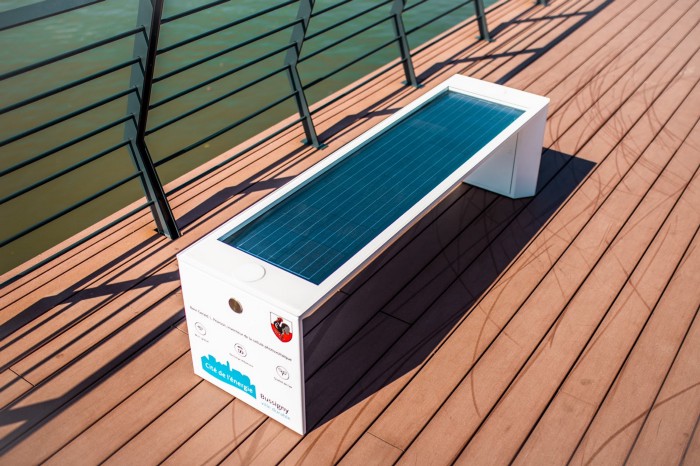
Just like our home, we all want our cities to follow the development, to upgrade and start adapting to our life already submerged in technology so deep that it is an integral part of who we are today. But what does it take to furnish a city, to equip it with smart solutions that would not only make our life easier, but also reduce costs, be easy on the local budget and not harm the environment? Is it possible?
In order to talk about smart city furniture, let’s start with the obvious.
What is street furniture?
It includes benches, traffic barriers, bollards, post boxes, streetlamps, traffic lights, traffic signs, bus stops, tram stops, taxi stands, public lavatories, fountains, public sculptures, and waste receptacles. When we want to make all that street furniture “smart” we actually want it to be more functional, to make our life easier without the cost to the environment.
Smart waste management doesn’t waste time
A decade ago, garbage trucks and sanitation workers would go around at precisely scheduled times, every day, to empty the bins around town so they’d be clean and ready for the new busy day. Of course, a bin in a park near a popular picnic spot or on a busy street is much more likely to be full by the afternoon. Sometimes overflowing with trash mid-day. Wouldn’t it be nice if somehow sanitation services would be able to know exactly which bin needs attention and when so that they could plan the collecting routes more efficiently?
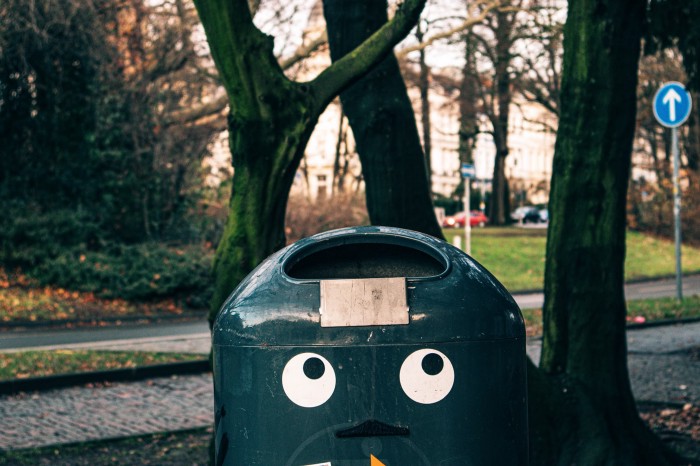
Today, smart bins can be connected to WiFi and equipped with fill-level sensors that track the situation in real time and send data that the bin needs to be taken care of. Majority of smart bins can be found in France, Germany and the UK, but also in various USA cities and Canada. It’s not a surprise that smart waste management ideas that are sustainable, reasonably priced and efficient in the long term are in high demand.
Next stop: Smart city
Waiting for the bus is a dramatically different experience than 15 years ago when there were no smartphones or mobile Internet to pass the time. In recent years smart city development has offered us another WiFI connected convenience and experience: a smart bus stop. While you wait for the bus you can check the real time traffic data, pay your bills, top up your phone credit, check pollen and noise levels and in case of emergency there are emergency call boxes, defibrillators and fire extinguishers. Singapore’s smart bus stop network offers free WiFi, phone chargers and in some cases even bookshelves where people can read and swap for the books they have already read. Barselona’s smart bus stops offer detailed tourist info and maps and free WiFi so in a way, every smart bus stop is essentially a tourist info desk.
Stuck in traffic? Not if you’re smart!
The Copenhagen municipal government claims that 25,000 tons of CO2 will be reduced by 2025 compared to 2011 levels. How do they plan to carry out that task? Through the city’s ITS (Intelligent Transport System) program. Controllers built in existing traffic lights on busy intersections will control the traffic in real time by favouring cyclists and public transportation. According to globalexplorer.com “Overall, the travel time of cyclists will be reduced by 10% and travel time for buses is expected to decrease by up to 20%… It will help Copenhagen achieve its vision to have 75% of all trips in the city be by bike, by public transport, or on foot by 2025.” Benefits for the environment that this measure would bring are quite substantial and if successful, will once again put Copenhagen on the list of one of the most successful cities when it comes to implementing smart technologies to elevate the quality of living.
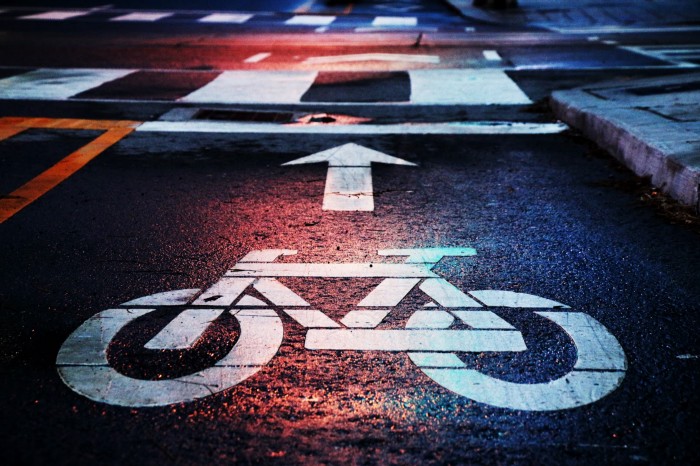
Smart bench – The best option for smart cities’ open public spaces
In 2011, a small startup Strawberry Energy wanted to find new ways to reimagine the city furniture by adding solar panels and phone charging ports powered by solar energy to their project – Strawberry tree. It was a success because it recognized the growing need for connectivity and addressed environmental issues. In 2015 the first solar Smart Bench was installed in London followed by the network of Smart Benches in 2016. Strawberry solar Smart Benches are now present in more than 25 cities in Europe.
How do people and companies use Smart Solar Benches?
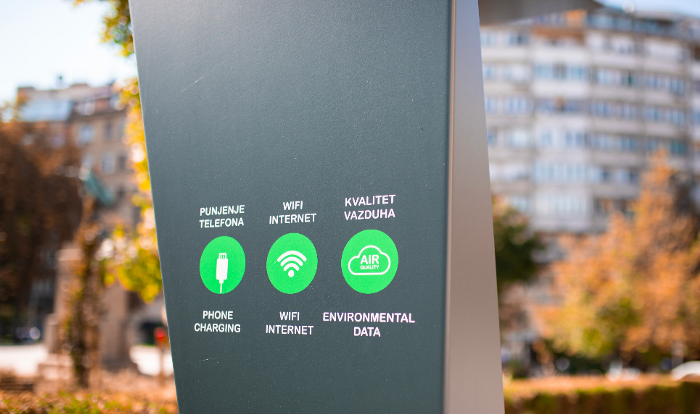
Smart solar bench has reinvented the “bench time” as we know it. We still sit on a bench to relax, meet up, take a break or eat take out lunch. But as we do it, we also browse the internet using the free and fast WiFi, charge the phone or check the environmental data for the area.
Advertisers gained a new territory to expand their influence and reach the audience. Branded smart bench also offers a branded landing page that pops up when people connect to free WiFi on the bench, allowing an advertiser to display a more personal and customized message for the desired audience depending on the time, weather conditions or current events. The smart bench measures engagement, number of chargings and visitor count, representing a valuable insight into consumer behavior, and above all, promotes the advertiser’s CSR efforts and positions the company as environmentally aware and proactive.
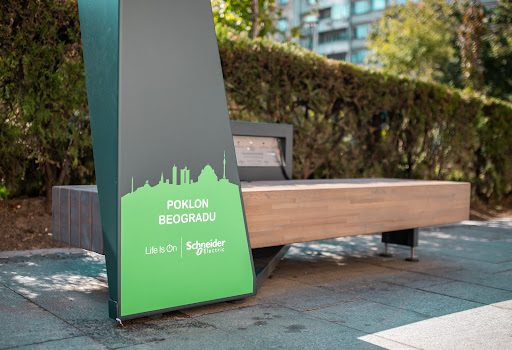
At the end of 2019 we already have smart waste bins, smart benches, smart bus stops and smart traffic lights. What the future holds for us and our cities? As it is expected that AI propels into our life more prominently, no one can reliably predict what impact it will have on urban infrastructure, community engagement and digital transformation. What we can say for sure is that street furniture will definitely become smarter, even cooler and more sustainable.
